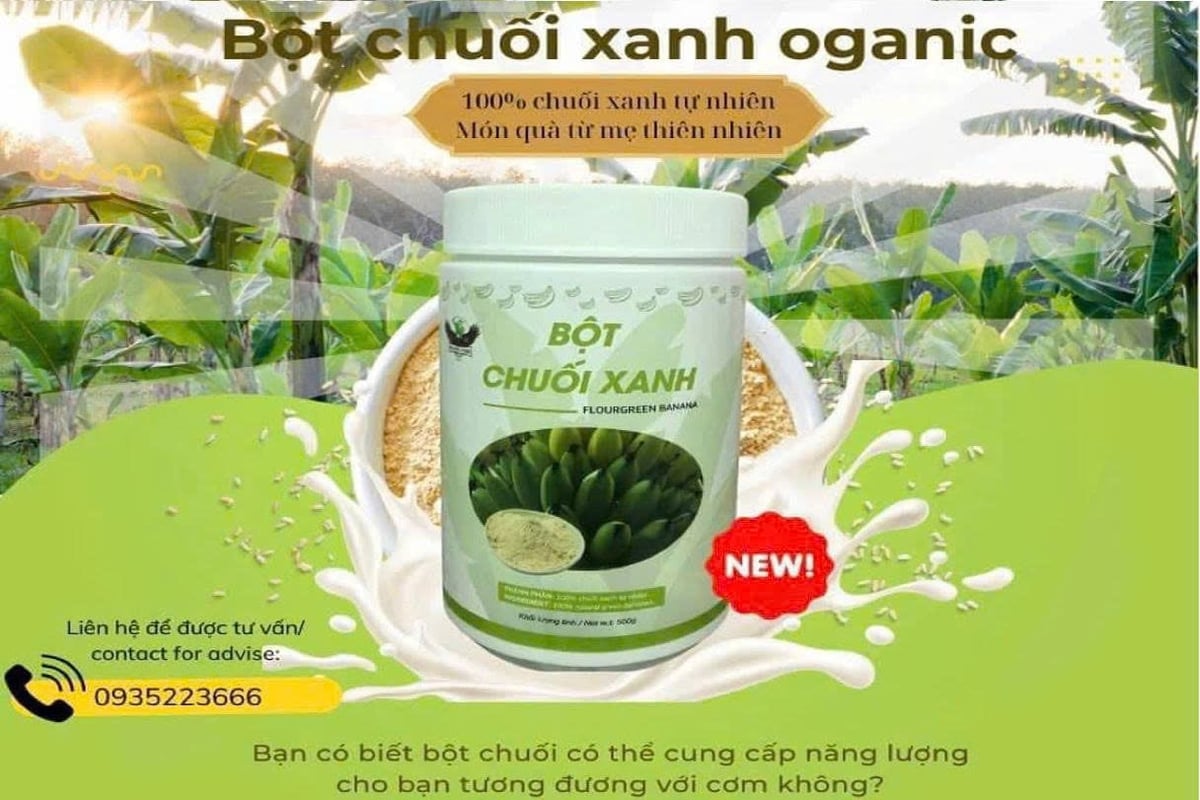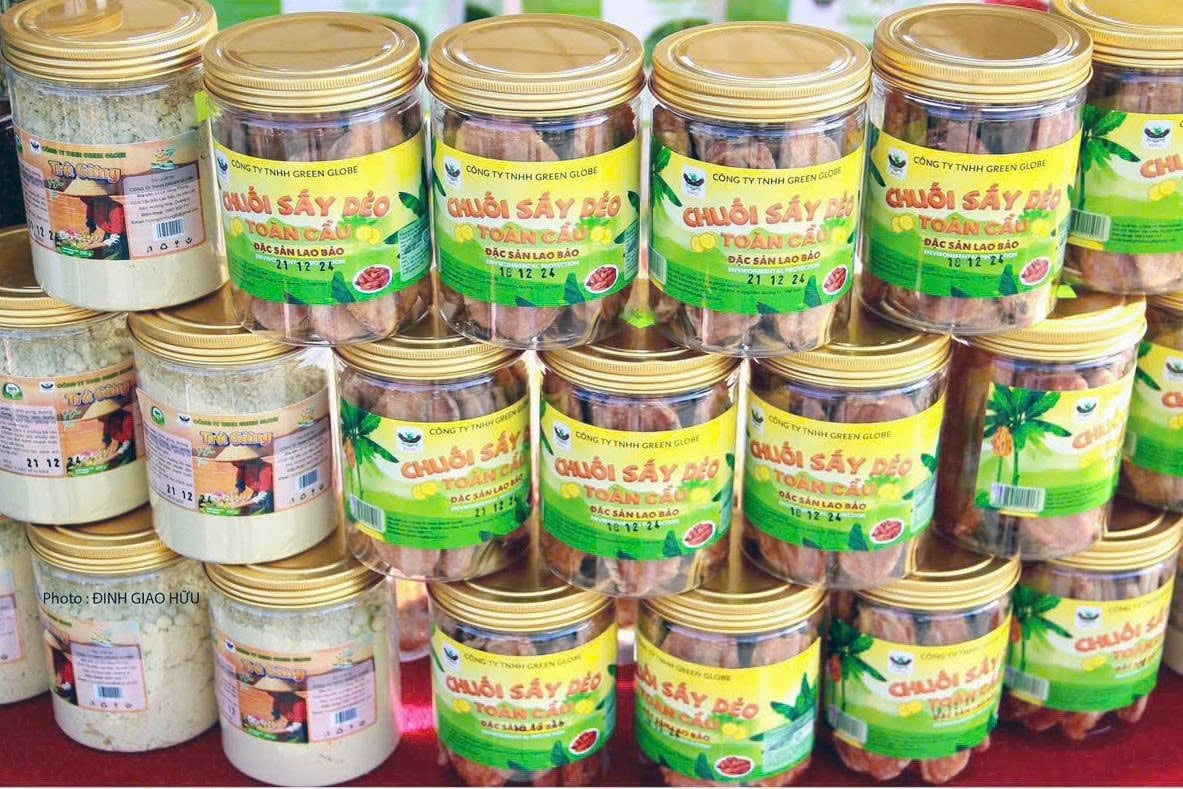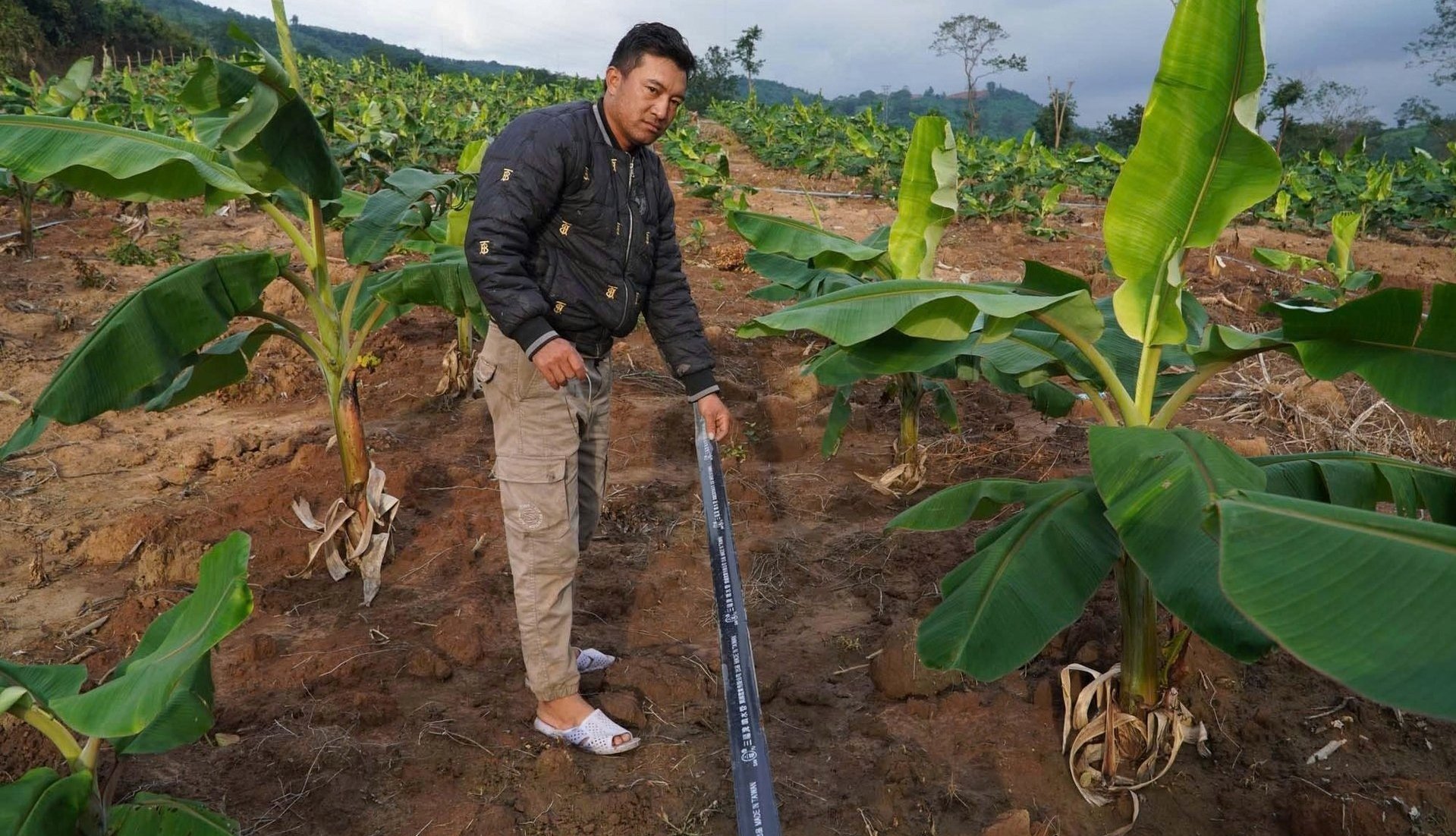December 17, 2025 | 02:13 GMT +7
December 17, 2025 | 02:13 GMT +7
Hotline: 0913.378.918
December 17, 2025 | 02:13 GMT +7
Hotline: 0913.378.918

Spotted bananas in Quang Tri are a naturally grown product that meets export standards. Photo: Vo Dung.
Southwestern communes of Quang Tri Province, located at the foot of the Truong Son mountain range such as Khe Sanh, Tan Lap, Lia, and Lao Bao, have nearly 3,000 hectares of spotted banana plantations. Of this, more than 2,800 hectares are currently in production, with an average yield of 14.5 tons per hectare and an estimated annual output of nearly 41,000 tons. Additionally, local residents have rented more than 1,000 hectares of land in Laos to grow bananas. This represents a massive raw material source for any business looking to invest in a processing line for spotted banana products. Moreover, by-products such as banana stems and peels can also generate significant value if a closed-loop circular production model is established.
According to many agricultural experts, spotted bananas from this region have a high natural sugar content, a pleasant aroma, and a rich, sweet flavor. These are strong advantages for developing value-added products such as dried bananas, banana powder, banana cakes, and even banana-based liquor or bio-cosmetics.
However, for many years, spotted bananas from these communes have mainly been sold at local markets at unstable prices, primarily serving domestic consumption. At times, one kilogram of spotted banana sold for less than VND 3,000, leading to widespread discouragement among growers. A modest amount of fresh bananas has been collected by small traders for export to Thailand and China. As a result, banana farmers continue to struggle with poor livelihoods. Meanwhile, businesses operating locally and venturing into banana processing also face several challenges, with most of their output still limited to the domestic market.

Spotted bananas are currently being sold at retail in local markets across the southwestern communes of the province at unstable prices and low value. Photo: Vo Dung.
The main reasons include the lack of a stable raw material zoning plan, weak market connectivity, and insufficient investment in post-harvest technology. Furthermore, transportation infrastructure for agricultural products in mountainous areas remains underdeveloped, driving up logistics costs.
Truong Thi Nhung, Director of Green Globe Co., Ltd. in Lao Bao Commune, shared that at the end of 2020, the company invested in three spotted banana soft-drying lines. With these three lines, Green Globe has the capacity to purchase thousands of tons of spotted banana annually to produce two products: soft-dried bananas and green banana powder. Green Globe’s soft-dried bananas have already earned a 3-star OCOP product certification. However, due to limited market access, the company has only been able to process a few hundred tons of bananas each year. Green Globe mainly sells its products via retail channels on social media. At one point, the company exported both products to the U.S. market through a partner in Vietnam. However, export volumes were very modest and faced many obstacles.
“Our processed products have passed inspection by a Japanese partner and meet export standards. We are also working with a business in Hanoi to handle export procedures. But the most important thing is the market. We really need a large enterprise to back us so we can feel confident investing in processing,” Mrs. Nhung said.
Mrs. Nhung also noted that the company is currently using processing by-products to produce organic fertilizer. Although the fertilizer has been tested and certified by the former Quang Tri Department of Science and Technology to meet market standards, Green Globe has so far only used it experimentally on banana and fruit orchards grown by the company. In reality, this organic fertilizer is suitable for many types of fruit trees in the region.

Many households have invested in growing spotted bananas, but the returns have not met their expectations.
Some major banana-growing areas in Vietnam are already using banana stems to create handicrafts. Along with organic fertilizer production during banana processing, the cultivation and processing of spotted bananas can form a closed-loop circular system that utilizes nearly every part of the banana plant.
This circular economy model not only helps reduce production costs but also contributes to minimizing agricultural waste and greenhouse gas emissions. It promotes green and environmentally friendly agriculture, which is strongly encouraged by both the government and international organizations.
The southwestern communes of Quang Tri Province have a vast banana-growing area and are well-positioned to support the development of large-scale processing facilities aimed at export. At one point, the Quang Tri Department of Agriculture (now the Quang Tri Department of Agriculture and Environment) visited several banana cultivation and processing models in northern provinces. However, for unclear reasons, a banana processing project has yet to be implemented in the southwestern communes of Quang Tri. This is truly unfortunate, given the region’s vast banana acreage and already established brand reputation.
Translated by Huong Giang

(VAN) The seafood industry is aiming for an export goal of USD 10.7 billion in 2025. However, resolving bottlenecks regarding data and green finance is an urgent requirement.

(VAN) Exports of ornamental fish generate nearly USD 15 million annually for Ho Chi Minh City, affirming the sector's position as a distinctive economic component of the city's modern urban agriculture structure.

(VAN) Lang Son agricultural products are upgrading planting-area standards, increasing deep processing, and expanding linkages to move toward sustainable exports.

(VAN) Despite numerous challenges, Vietnam's key seafood products are maintaining strong momentum, setting the stage for full-year exports to potentially reach USD 11 billion.

(VAN) The signing of a protocol between Viet Nam and China on the export of fresh jackfruit represents a significant milestone in agricultural trade cooperation between the two countries.

(VAN) On November 27, the Ninh Binh Department of Agriculture and Environment and the Institute for Green Growth Research organized a training course on greenhouse gas inventory for businesses.

(VAN) China’s cooking oil is suddenly flooding into India. It all comes down to a soybean surplus that Beijing doesn’t quite know what to do with.